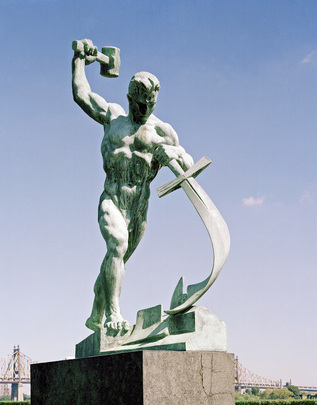Silence and Violence
[caption id=“” align=“alignright” width=“300”] Silent Cross by Margot Krebs Neale[/caption]
Silent Cross by Margot Krebs Neale[/caption]
“Violence is not human destiny because the God of peace is the beginning and the end of human history…
“Granted, pushing the stone of peace up the steep hill of violence … is hard. It is easier, however, than carrying one’s own cross in the footsteps of the crucified Messiah. This is what Jesus Christ asks Christians to do. Assured of God’s justice and undergirded by God’s presence, they are to break the cycle of violence by refusing to be caught in the automatism of revenge.” (Volf, E&E, 306)
“Silence,” a sonnet for Remembrance Day written by Malcolm Guite:
November pierces with its bleak remembrance Of all the bitterness and waste of war. Our silence tries but fails to make a semblance Of that lost peace they thought worth fighting for. Our silence seeths instead with wraiths and whispers, And all the restless rumour of new wars, The shells are singing as we sing our vespers, No moment is unscarred, there is no pause, In every instant bloodied innocence Falls to the weary earth ,and whilst we stand Quiescence ends again in acquiescence, And Abel’s blood still cries in every land One silence only might redeem that blood Only the silence of a dying God.
Then, Volf on violence:

“Religions advocate nonviolence in general, while at the same time finding ways to legitimate violence in specific situations; their representatives both preach against war and bless the weapons of their nation’s troops. And so the deep religious wisdom about nonviolence boils down to a principle that no self-respecting war-lord will deny, namely that you can be violent whenever you cannot be nonviolent, provided your goals are just (which they usually are for the simple reason that they are yours). Religious dialogue or no religious dialogue, without the principled assertion that it is never appropriate to use religion to give moral sanction to the use of violence, religious images and religious leaders will continue to be exploited by politicians and generals engaged in violence.” (Volf, E&E, 286).
Finally, Volf’s conclusion (E&E, 306):
“It may be that consistent nonretaliation and nonviolence will be impossible in the world of violence. Tyrants may need to be taken down from their thrones and the madmen stopped from sowing desolation. […] It may also be that measure which involve preparation for the use of violent means will have to be taken to prevent tyrants and madmen from ascending to power in the first place or to keep the plethora of ordinary kinds of perpetrators that walk our streets from doing their violent work. It may be that in a world suffused with violence the issue is not simply “violence versus peace” but rather “what forms of violence could be tolerated to overcome a social ‘peace’ that coercively maintained itself through the condoned violence of injustice” (Suchocki 1995, 117). But if one decides to put on soldier’s gear instead of carrying one’s cross, one should not seek legitimation in the religion that worships the crucified Messiah. For there, the blessing is given not to the violent but to the meek (Matthew 5:5).
“There are Christians who have a hard time resisting the temptation to seek religious legitimation for their (understandable) need to take up the sword. If they give in to this temptation, they should forego all attempts to exonerate their vision of Christian faith from complicity in fomenting violence. Of course, they can specify that religious symbols should be used to legitimate and inspire only just wars. But show me one warring party that does not think its wars is just! Simple logic tells us that at least half of them must be wrong. It could be, however, that simple logic does not apply the chaotic world of wars. Then all would be right, which is to say that all would be wrong, which is to say that terror would reign – in the name of gods who can no longer be distinguished from the devils.“